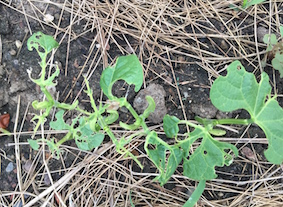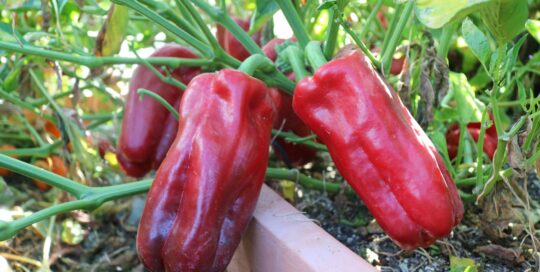Snails and Slugs in the Vegetable Garden
Views: 1154

Snails and slugs can do some serious damage to a crop just emerging from the ground. As you can probably guess, this is the harm I’ve most recently experienced in my own garden.
I’ve written several times this season about my insect barrier. It’s been awesome at keeping flea beetles and leaf miners away from radishes, beets, spinach and chard, especially when the crops are just seedlings and at their most vulnerable. I did express concern about pests emerging from the ground beneath the insect barrier and just having their way with the buffet of crops under protection. Well, that did happen—in a way. But rather than insects it has been slimy mollusks.
Snail and Slug Living Conditions
Snails and slugs require moist conditions to live. Hot and sunny weather will get them drying out in no time—especially slugs—so they hide away during the day instead. The snails conveniently have a shell they can escape into for some protection. I’ve seen snails tucked away inside the shell but still clinging onto the back of a leaf. Slugs, though, need full-on protection. They prefer to hang out in dark, moist places: under rocks and boards, in crevices, in a pile of leaves or compost and in a shady grove of hostas. Snails and slugs will emerge at night when conditions are more favorable and essentially feed at will.
Where do they come from? Well, I don’t know about slugs, but I have seen snails in my garden hiding out under rhubarb leaves, so I will assume the damage I’ve incurred under the insect barrier is from snails. I secured the insect barrier to the ground with all of those things slugs and snails love to hide under: wooden stepping tiles, burlap and bricks. Those are perfect hiding spots for slugs and snails. I essentially gave them the tables closest to the buffet.
Getting Rid of Snails and Slugs
There are a number of ways to combat snails and slugs. First, look for those potential hiding spots and remove any that you find—smush them or take them far away, whatever your preference.
Second, materials that hurt or injure their soft bodies will deter them. Those deterrents are things like crushed eggshells, diatomaceous earth. Also in this category are things that prevent their sliding across the ground, such as copper wire and apparently Vaseline.
Third, and if the other two don’t work for some reason, there are some bait controls that you can sprinkle around your plants. Sluggo, for instance, is pellet material that will lure the snail or slug, be eaten by them and will eventually kill them.
Opting for the deterrents rather than the “eliminators” means those snails and slugs live to reproduce. Be vigilant!
Meet Ellen Wells
When you’re raised on a farm, you can’t help but know a thing or two about gardening. Ellen Wells is our expert on edible gardening.…
Ellen's Recent Posts

Pepper Red Impact an All-America Selections Winner






